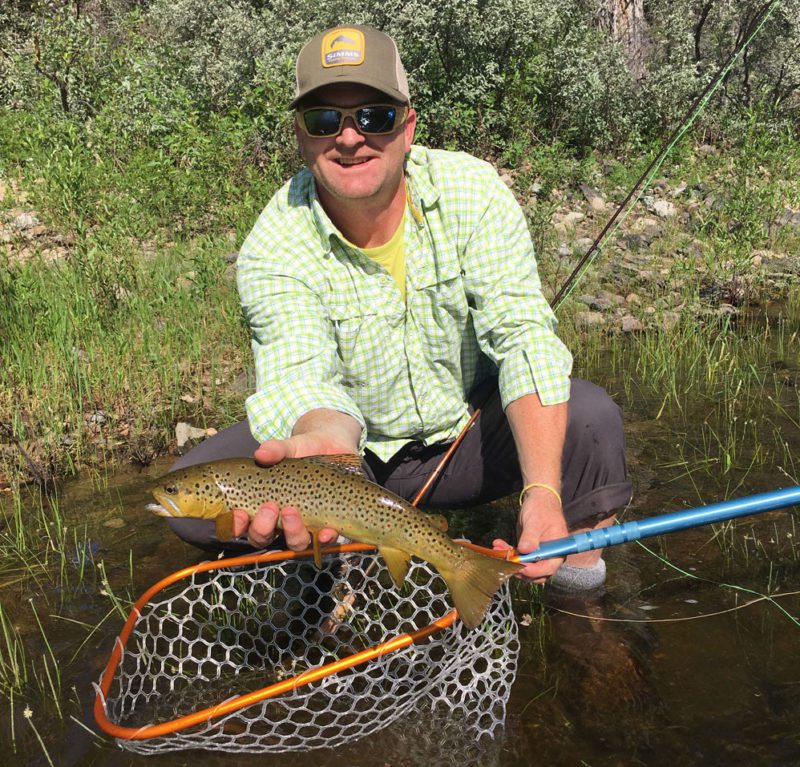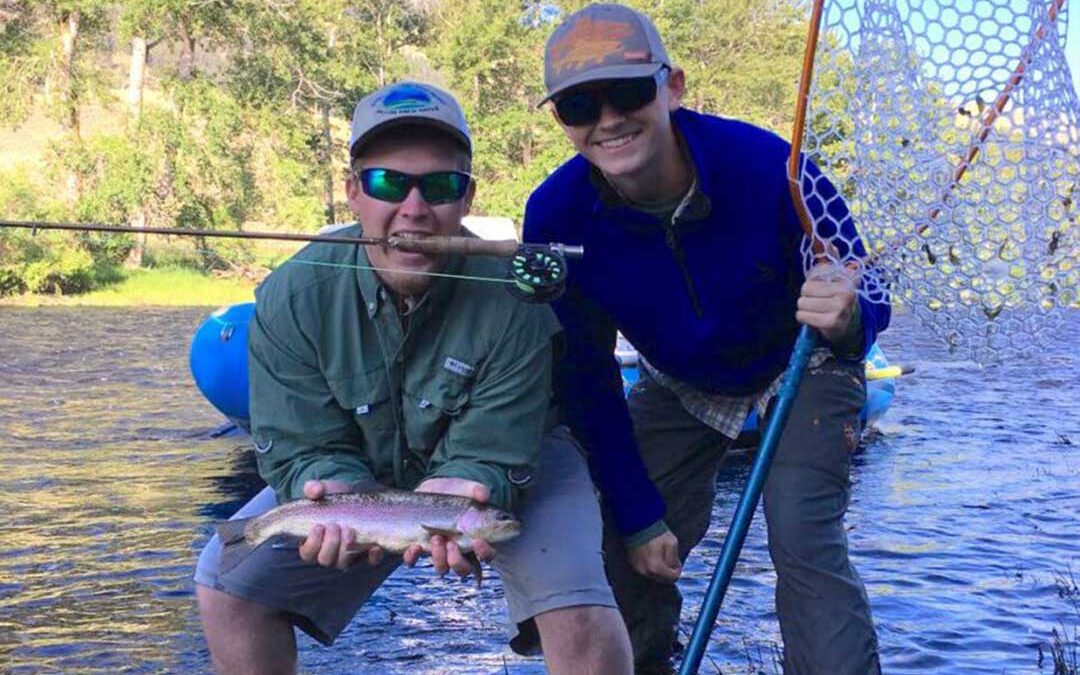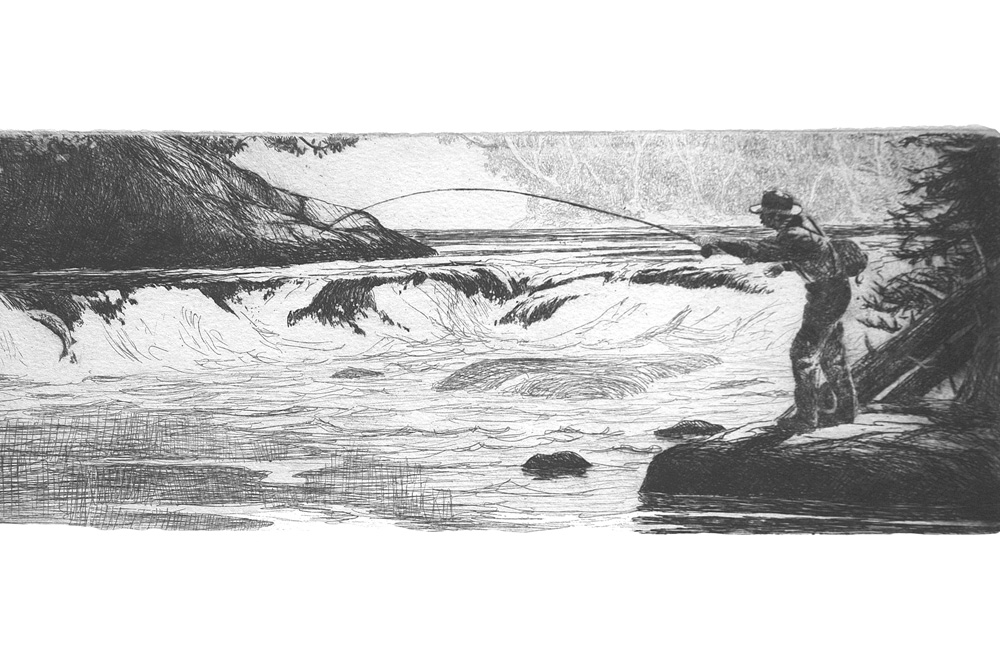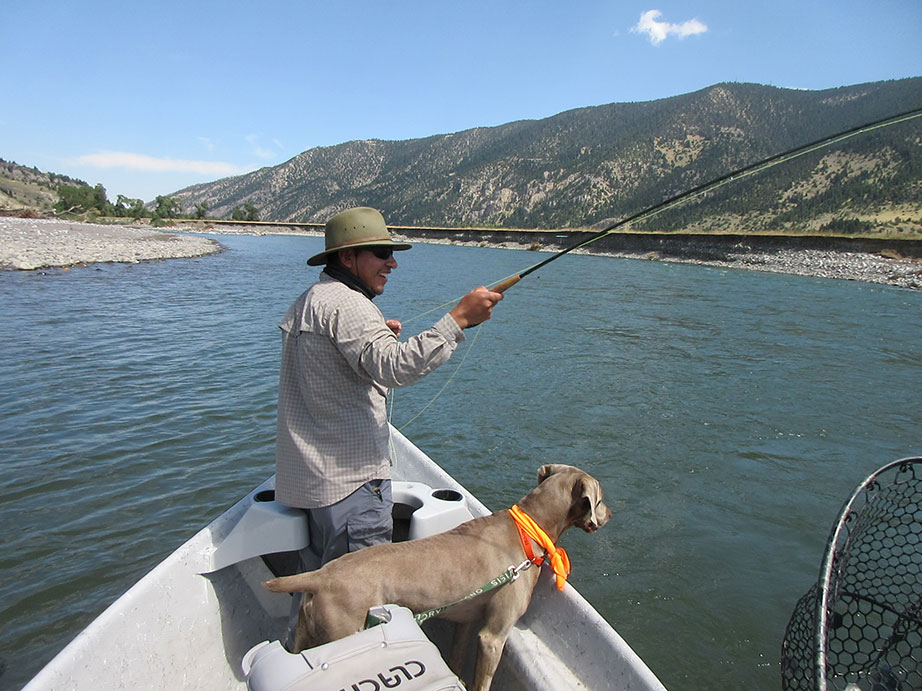Like many waters in the West, there has been an attempt to create and popularize a goal of catching each of the available types of fish, adding the moniker of a “slam.” The “Big Hole Slam” includes browns, cutties, rainbows, brookies, grayling, and the lowly whitefish. To accomplish the Big Hole Slam in a few days is a feat; in one day, amazing! Most of our group of five missed the slam by only a grayling.
Though snubbed by some snobbish fly fishers, the whitefish tends to be one of the best of the battling Big Hole piscenes. On many stretches, doldrums are broken by the sudden strike of the stout whitefish. If you use a dropper or, of course, nymph-fish, they will probably outnumber other fish two to one. That was my experience, anyway.

Along with its aquatic inhabitants, the Big Hole drainage supports a great diversity of terrestrial wildlife. Views of deer, antelope, bighorn sheep, moose, ospreys, golden and bald eagles, sandhill cranes, and coyotes were almost a daily occurrence.
This morning had a chill and a slight breeze as we left camp. The final day saw Nate, Todd, and I in the raft and Mark and Reese in the drift boat. I had tied on a Madam-X foam fly with a brown/red bead-head prince dropper, my philosophy being, “Why use a strike indicator without a hook on it?”
Within sight of the launch, I had a quick strike on the surface fly and was in the middle of a good fight. The fish broke through the water’s surface as it struggled with the hook in its jaw. In the glint of early morning, Todd and I both thought I had the grayling needed to complete the slam.
The excitement began to build as the craft was nearing shallow rapids, which further complicated the process of getting the fish netted. After a few missed opportunities, however, the grayling-turned-rainbow-trout was netted and safely released.
Our tradition dictates that anyone who catches a fish is relegated to the oars. As it turned out, I wouldn’t be there long—nobody would! While Nate maneuvered through a stretch of white water, Todd snatched a good rainbow on the port side. Just as quickly, I had a nice brown on the starboard side. The raft crew would catch four sets of doubles by day’s end.
The drift boat with Mark and Reese eventually caught up with us, bringing the great news of Mark landing what would be the best fish of the trip—a huge brown caught and released at the last drift. Mark and Reese caught as many aggressively feeding trout as we did during the short stay at the base of the rapids.
We noticed several topwater feeding episodes during the morning drift. It was exciting to have the majority of the fish strike terrestrials for a change. My largest fish of the trip—an 18-inch whitefish—was taken off the surface with the Madam-X!
The day’s action slowed with rising early summer temperatures; our adventure was at an end. Soon we would be sharing a fine meal, stories around the campfire—the perfect way to end any time spent afield or astream.




